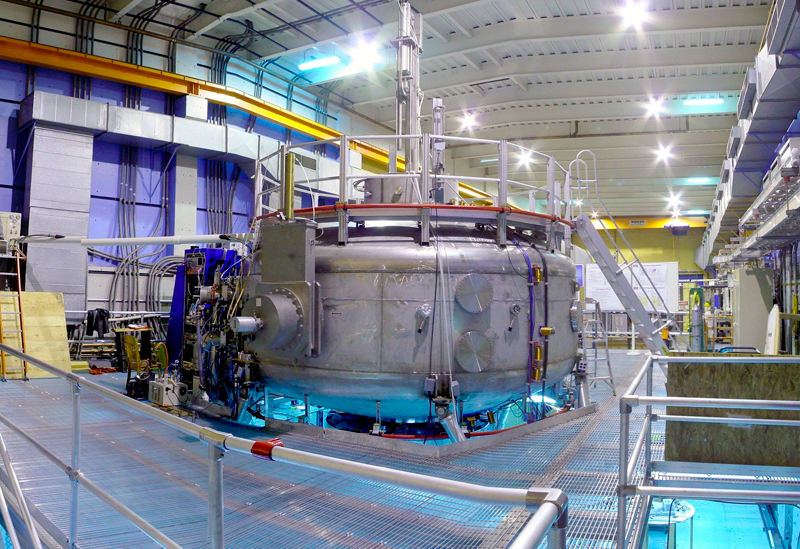
Fusing Fusion Concepts: Plasma-Jet driven Magneto-Inertial Fusion (PJMIF)
The fusion projects we often hear about fall into one of two camps: Magnetic Confinement Fusion (MCF) or Inertial Confinement Fusion (ICF). Of course, each project has its own spin on fusion. For example, MIT’s Levitated Dipole Experiment (LDX) follows the tokamak model commonly used in MCF, but instead of generating the magnetic field through coils wrapped around the reactor, LDX brings the magnetic field inside the chamber, allowing for different interactions with the plasma. On the ICF side of things, the Naval Research Lab is taking a direct drive target approach, while scientists at Lawrence Livermore’s NIF have opted to go the indirect drive route. Despite their differences, all of these projects rely on the two fusion concepts that dominate the fusion discourse.

The Levitated Dipole Experiment reactor, housed inside a 16-foot-diameter steel structure. Photo: MIT.
But fuse MCF and ICF together and you get Plasma-Jet driven Magneto-Inertial Fusion (PJMIF), a nuclear newbie that has just recently begun to receive funding.
The parameters at which PJMIF should operate are almost literally halfway between MCF and ICF. In PJMIF, a magnetic flux is either frozen in the hot spot of an inertial fusion target or embedded in a target plasma bounded by a conducting shell, which conserves the magnetic flux. By introducing a magnetic field in the target, the requirements on the initial jet energy can be significantly lowered, which allows for a more compact system with better efficiency.
Magneto-inertial fusion is currently being pursued in the United States as a science-oriented research program in high energy density laboratory plasma by the Department of Energy’s Office of Fusion Energy Sciences. Los Alamos National Laboratory is spearheading a multi-institutional collaboration called the Plasma Liner Experiment (PLX) with component experiments occurring at the University of Rochester and HyperV Technologies Corp.
According to a 2008 report, more research is required to develop the scientific knowledge base on the physics involved in PJMIF, but if proven, PJMIF would require vastly lighter and smaller facilities than those needed for MCF and ICF.
The diversity in our nation’s fusion program is a good sign. The science is progressing, even if funding isn’t necessarily flowing. But it’s important that our scientists keep innovating, in spite of the obstacles, in order to fully develop these technologies so that they may one day become viable solutions to the energy problem.






Thank you for this blog post and bringing attention to the diversity of ideas in the US fusion program. Please note that the University of Rochester has an independent research effort related to magneto-inertial fusion using their Omega laser facility. Theirs is not directly tied to the Plasma Liner Experiment (PLX) effort being led by LANL.